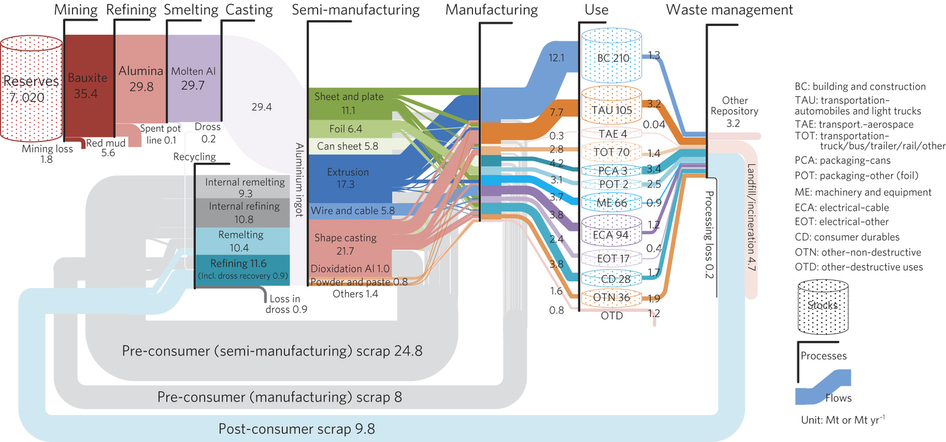A 50% reduction in greenhouse gas
emissions by 2050, which would bring levels to below 2000 levels, cannot be
reached if developing countries’ patterns of aluminium stocks follow those of
industrialized economies, reports a study published recently in Nature Climate Change.
Gang Liu, Colton Bangs and Daniel Müller
from the Norwegian University of Science and Technology simulated the
future global aluminium cycle and explored its associated emission pathways and
mitigation potentials. They found that the 50% reduction target can only be
reached if future global per-capita aluminium stocks saturate at 200 kg, a
level much lower than that present in major industrialized countries, which
ranges between 400 and 600 kg. This indicates that traditional mitigation
strategies focusing on emission-intensity reduction in primary production such
as carbon capture and storage, should be complemented with innovative
approaches aiming to reach the same or higher level of service with smaller
stocks of materials in use, for example, lightweight design and optimization of
components.
Stock dynamics and emission pathways of the global aluminium cycle
Norwegian University of Science and Technology

No comments:
Post a Comment